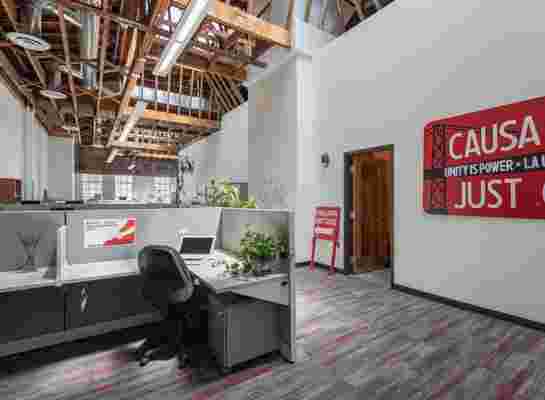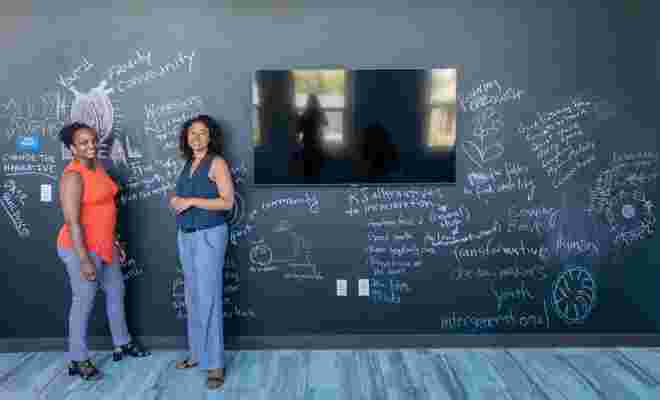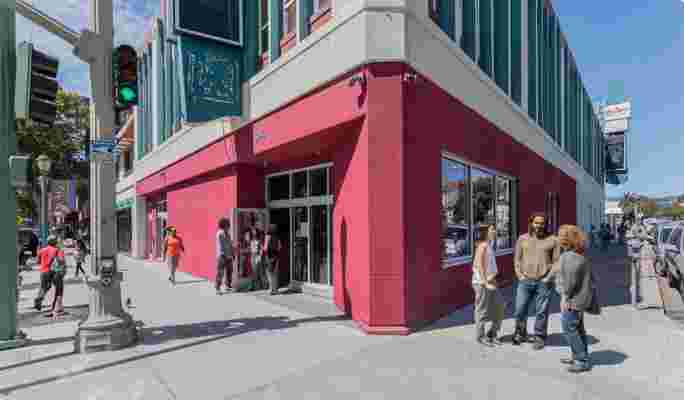A first-of-its-kind community center, Restore Oakland is 20,000-square-foot building in Oakland, California, filled with tenants that offer legal services, shared workspaces, and job training facilities, all aimed at offering local residents access to resources and creating a safe, secure neighborhood. Designed by nonprofit architecture and real estate development firm Designing Justice + Designing Spaces , Restore Oakland also does something greater: By creating a typology and infrastructure that facilitate restorative justice and advance economic opportunity, it's providing an innovative model for a baseline approach to ending mass incarceration. Such empathic spaces offer a paradigm shift in how we address crime and offer access to resources.

Designing Justice + Designing Spaces set out to emphasize a welcoming, nurturing vibe through design.
DSDJ's work at-large —which includes peacemaking centers, mobile resource centers, and housing for people coming out of incarceration—counters the traditional adversarial and punitive architecture of justice (think: courthouses, prisons, and jails). Instead, its designs focus on fostering restorative justice (which emphasizes repairing harm, rather than punishment), rehabilitation, and community building. By addressing the root causes of mass incarceration—poverty, racism, unequal access to resources, and the criminal justice system itself—a building such as Restore Oakland becomes a forward-thinking iteration of what justice can look like from the ground up, by starting, literally, with a foundation for safe, secure communities.
“We build what we believe,” says Deanna Van Buren, cofounder of DJDS. “If we believe in punishment and retribution, we literally build it in concrete and steel. If we believe that some members of society are less valuable than others, we build that hatred into the design of our cities.” A negative approach to design, she says, amplifies those beliefs and foments them, “making it hard to ever create a just, equitable society for all.”

Deanna Van Buren (right), cofounder of Designing Justice + Designing Space, with Shelley Davis Roberts, architectural associate at the firm.
Programmatically, the design team took a wholly new approach in developing Restore Oakland, which is located in the city's Fruitvale neighborhood. The three-story, multi-use space includes a 4,700-square-foot restaurant with an open kitchen that celebrates its mission not only to serve diners but also as a teaching space for helping local residents enter the restaurant field in higher-paying jobs. Below ground—a space informally called “The Den”—meeting rooms allow for casual gatherings, and also pay tribute to the history of basements as places where activists gather to stimulate and facilitate change.
The second floor, with its high ceilings, ample natural light, and the central kitchen, is home to the Ella Baker Center for Human Rights as well as other tenants. Here, meeting rooms, some dedicated to restorative justice and peace-building, are lined with “expression walls” for messages and art, and flexible walls that can create privacy and refuge. Large windows, calm colors, soft carpet, and comfortable seating contribute to the welcoming, nurturing vibe, in stark contrast to traditional courthouses and prisons, “which tend to be windowless, oppressive, and punitive,” says Van Buren.

Restore Oakland is a bright, welcoming presence on a busy corner in Oakland's Fruitvale neighborhood.
Though Restore Oakland opened its doors just a few weeks ago, it is already having an impact—not only in the local community but also on others around the country looking to replicate the idea. “Restore Oakland provides a powerful model for how every city can play a role in ending mass incarceration by creating a new type of infrastructure that facilitates restorative justice,” says Van Buren, “while advancing economic opportunity in communities that have long been oppressed.”
